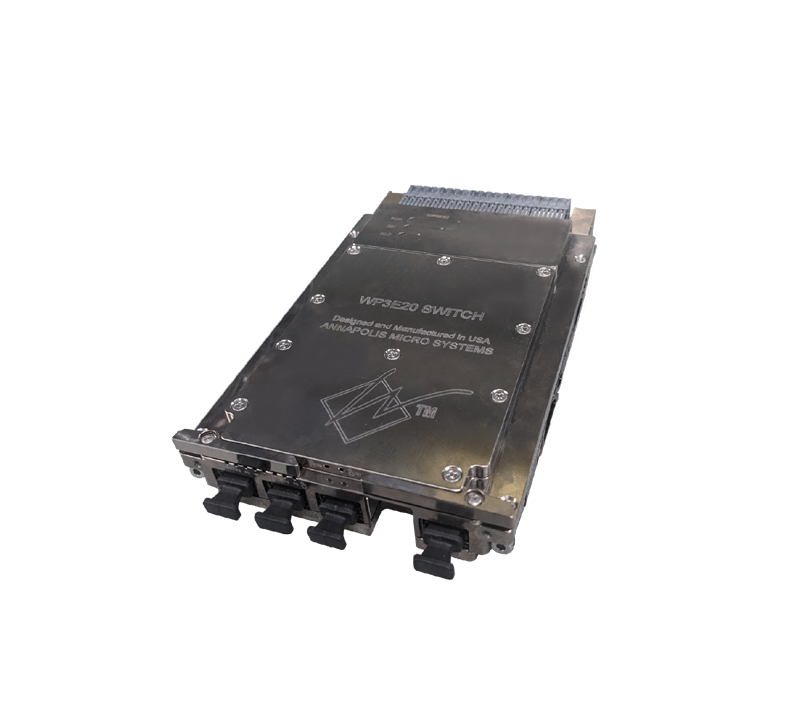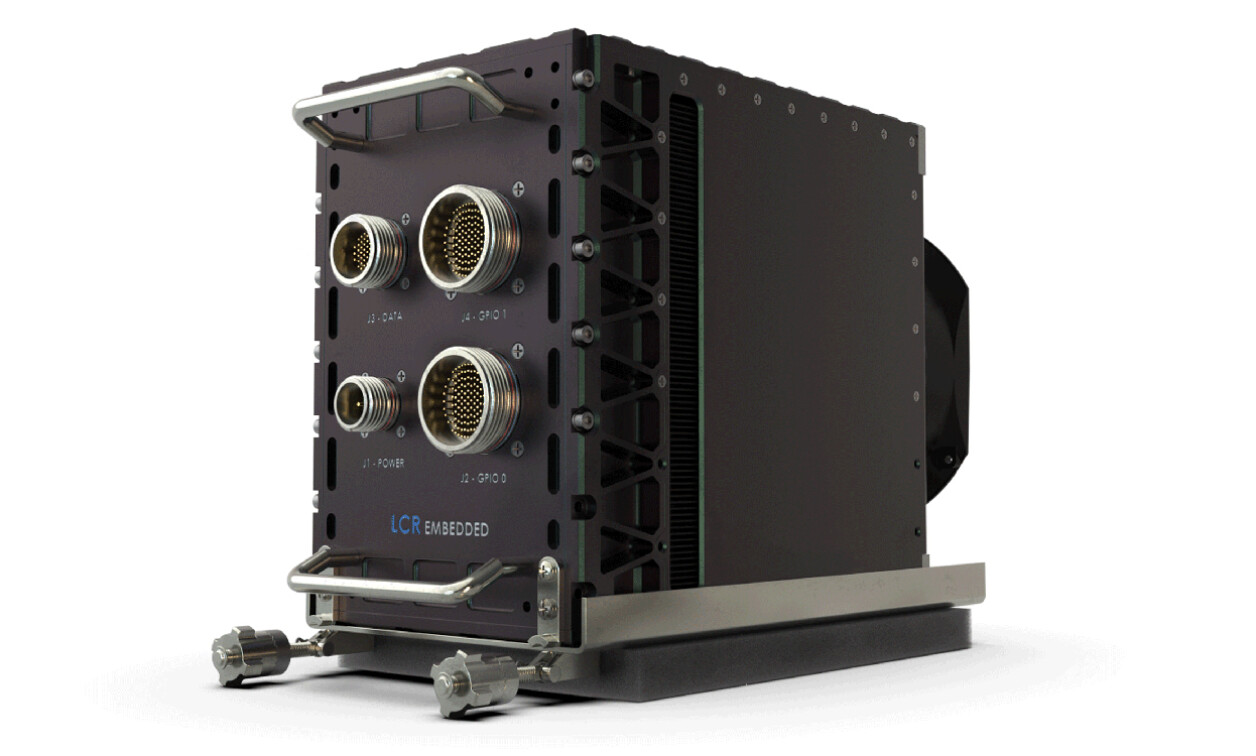| 2ND GEN DIGITAL BEACHHEAD SYSTEM NOW SUPPORTS THE REQUIREMENT FOR PROVIDING M-CODE GPS CAPABILITY FOR THE U.S. ARMY’S POSITIONING, NAVIGATION AND TIMING (PNT) ARCHITECTURE |
AUSA 2015, WASHINGTON, D.C. – Curtiss-Wright Corporation today announced that its Defense Solutions division has announced support for Military Code (M-Code) Position, Navigation and Timing (PNT) architecture on its recently introduced second generation DuraDBH-672 Digital Beachhead™ Gigabit Ethernet (GbE) switch and vetronics computer subsystem. Now supporting an integrated M-Code Ground-Based GPS Receiver Applications Module (GB-GRAM-M), the Digital Beachhead directly addresses the U.S. Army’s GPS modernization programs and requirements for an assured PNT hub capable of delivering PNT to multiple devices on a VICTORY network backbone. The original DBH-670 Digital Beachhead product, introduced in 2012, was the industry’s first integrated VICTORY solution for implementing the U.S. Army/U.S. Marine Corps supported Vehicle Integration for C4ISR/EW Interoperability (VICTORY) standard. The new DuraDBH-672 model continues that legacy in a form factor further optimized for low size, weight, power, and cost. Both Digital Beachhead variants combine a VICTORY infrastructure switch and a VICTORY shared services processor and feature GigE switching and VICTORY data bus, management, and shared service support.
GPS Receiver for M-CODE / SASSM
Both Digital Beachhead products can now support an optional integrated Rockwell Collins SAASM or M-Code GB-GRAM GPS receiver module to enable PNT hub services for subsystems on a VICTORY network. GPS support spans MPE-S Type I/II GB-GRAM, M-Code GB-GRAM, and SPS C/A Code PolarisLink receivers. System GPS capabilities also include support for an external GPS and 1-PPS input (i.e. from a DAGR). A major component of the GPS modernization process, M-code will give users access to a higher-power signal that is more resistant to jamming, improved message formats, and signal modulation techniques that make it both faster and more accurate. M-code receivers will also have advanced security features aimed at preventing unauthorized access or exploitation by adversaries.
“Curtiss-Wright is proud to be supporting the Army with the implementation of two critical military vehicle capabilities: Assured PNT and the VICTORY architecture,” said Lynn Bamford, Senior Vice President and General Manager, Defense Solutions division.
The recently introduced DuraDBH-672 Digital Beachhead is designed for system integrators seeking a rugged Size, Weight, Power and Cost (SWaP-C) optimized COTS solution for implementing VICTORY. Compared to the original Digital Beachhead, the DuraDBH-672 reduces overall size by about 50% while also reducing system weight and cost and adding I/O expansion capabilities for specialized databus requirements (i.e. MIL-STD-1553). The DuraDBH-672 supports both ground vehicle and airborne platform applications with MIL-STD-704/1275 power compatibility and MIL-STD-810G environmental requirements for tactical land vehicles and aircraft platforms.
The Parvus DuraDBH-672 Digital Beachhead
The new DuraDBH-672 system builds on and enhances the proven and popular VICTORY appliance capabilities introduced in the original DBH-670 Digital Beachhead system. This all-in-one unit consolidates the network switch, vehicle processor, embedded GPS, solid state storage, and add-in I/O interface support in a single LRU. The updated DuraDBH-672 delivers 16 ports of managed GbE switching and static routing, a low-power quad core ARM® processor-based vetronics computer, and support for VICTORY software applications (based on U.S. Army TARDEC libVICTORY API) and common network services software. Its modular I/O and storage architecture is based on PCI Express® (PCIe) Mini cards and mSATA SSD Flash storage that supports the application-specific I/O requirements (MIL-STD-1553 / ARINC429 / COM / DIO / GPS modules) traditionally offered with Parvus DuraCOR mission computers. DuraDBH-672 is ideal for use in tactical ground vehicles and aircraft that need to upgrade situational awareness capabilities by implementing Ethernet network edge capabilities and low-power rugged computing capabilities.
Like Curtiss-Wright’s traditional Parvus model systems, this U.S.-built subsystem is dust and water proof (IP67) and runs fanless under extended operating temperatures. Designed for high shock/vibration requirements, the DuraDBH-672 integrates a filtered, transient-protected power supply for aircraft and vehicle use (per MIL-STD-1275, MIL-STD-704) and includes circular MIL-DTL-38999 connectors on its front panel for reliable network connections. For unique requirements, Curtiss-Wright offers turnkey Modified COTS (MCOTS) variants of the Digital Beachhead and application engineering services.
The DuraDBH-672 can be easily integrated with Curtiss-Wright’s broad family of high-performance x86 Intel® Core™ i7-based Parvus DuraCOR mission computer LRUs and Layer 3 Cisco® IOS®-based routers, such as the DuraMAR 5915, to develop an in-vehicle processing and network architecture.
Fulfilling the Promise of VICTORY
Today’s combat vehicles are typically deployed with multiple independent systems that have no ability to share their functionalities or data. To address and mitigate this problem, the U.S. Army’s VICTORY architecture encourages the use of COTS open-system standards, which helps reduce redundancy and makes additional space available by optimizing SWaP-C.
About Curtiss-Wright Corporation
Curtiss-Wright Corporation is a global innovative company that delivers highly engineered, critical function products and services to the commercial, industrial, defense and energy markets. Building on the heritage of Glenn Curtiss and the Wright brothers, Curtiss-Wright has a long tradition of providing reliable solutions through trusted customer relationships. The company employs approximately 9,000 people worldwide. For more information, visit www.curtisswright.com.







